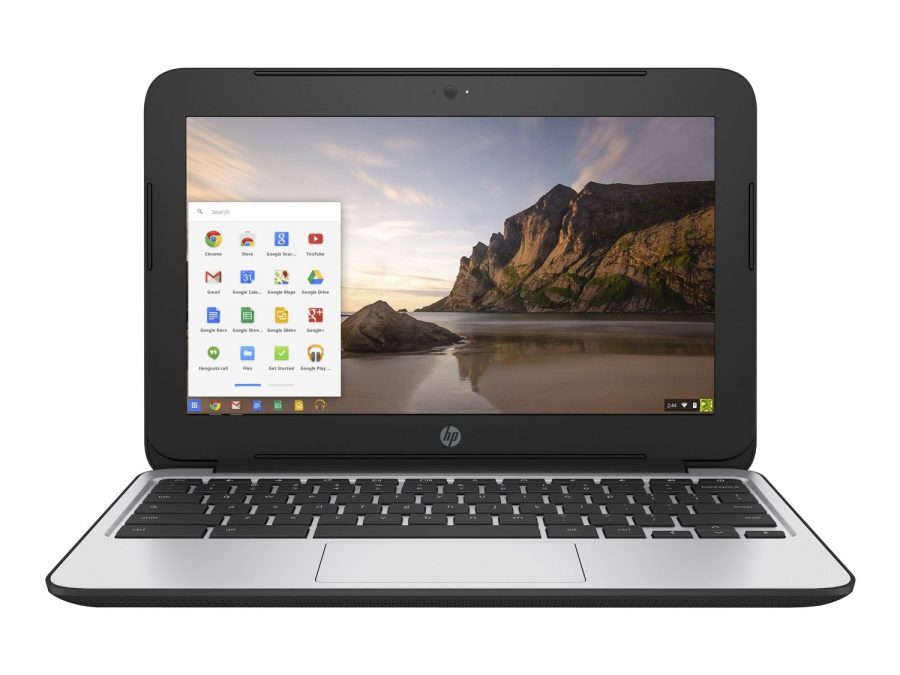Technology’s Role at Mount Greylock
In an ever paperless world, it is no secret that technology is the face of the new generation. Whether it be electronic devices such as phones or laptops, or online tools like google, technology plays a vital role in everyday life. As the popularity of technological devices and resources has increased, it has also continually become more apparent in schools as well. More specifically, Mount Greylock has taken large strides recently towards making the school increasingly paperless and up to date with new times technology-wise.
In late October of 2017, students in grades 8-12 received Chromebooks provided by the school. These new Chromebooks have been in some ways an incredibly convenient tool both in class and outside of school. In the classroom, they allow students to easily access online information and research for projects, papers, and other assignments. Additionally, for many students typing has become easier than writing with pencil and paper, and making edits on a Chromebook is much easier than revising a handwritten paper. It is also useful for students to have a chromebook outside of the school building. “Many students do not have the financial resources to buy a several hundred dollar laptop,” mentions Eva Myers, a sophomore. Myers explains that since the Chromebooks were free, with an optional yearly fee of $25.00 for insurance, they “allow students to do projects, write essays, and complete other necessary assignments at home.”
Students possessing their own Chromebooks have disadvantages as well. According to freshman Erin O’Keefe, “it’s not just the weight of the Chromebook itself. The case weighs the most out of the two and it’s hard to fit into backpacks.” Many students’ backpacks are already filled to the bursting point with textbooks, notebooks and papers. Chromebooks and their covers add a mountain of extra weight to them. Also, many, both teacher and students, have found the Chromebooks to be an easy distraction. As high school English teacher Blair Dils puts it, “students can hide behind their screens and pretend to be paying attention when they are actually trying to watch videos or a show on Netflix using closed captioning.” This creates a possible problem for students’ abilities to pay full attention to lessons being taught. On top of this, in an ever more technological world, some feel that students are not learning to interact with one another off of technology. As Brian Gill, gym coach and sports and society class teacher, explains, “in this classroom alone, 7 out of 11 people here are on their Chromebooks. With this new technology, students do not learn to interact face to face.”
Recently, MGRHS has begun to use educational platforms such as Google Classroom, Canvas, turnitin.com, and Google Drive, among others. These platforms have been an advantage for students in the sense that they can easily turn in assignments without the unnecessary use of paper. Assignments posted by teachers on new educational platforms make them easy to access for students. For example, a teacher can link a particular resource within a platform that students can easily view, making for a more technologically interactive learning environment. Also, at home, students can easily access homework and other assignments online. For example, essays can be easily accessed anywhere by Google Docs which has been a helpful tool for many students.
However, there has been a bit of controversy regarding some of these platforms, especially Canvas. Canvas is a specific platform that, similar to Google Classroom, allows teachers to post important updates and assignments for students to view. This sounds like a useful tool, but many have found it to be confusing and difficult to use. Wellness teacher and Coach Emily Leitt mentions, “lots of teachers and students are just getting used to more simple technologies such as Google Slides and Google Docs. Canvas is a great tool, but not many people know how to use it.” On top of this, lots of platforms are temperamental. Teachers expect students to turn in assignments on a specific due date. However, sometimes the websites do not work for one reason or another and students cannot turn in the assignment.
With a new school being built, there is a world of possible technological opportunities lying ahead. According to Eileen Belastock, Director of Academic Technology at MGRHS, “one of the exciting parts of moving into a new school building is that every classroom will have interactive projectors.” These interactive projectors will allow teachers to project things like charts, worksheets and more onto a board while being able to write on it at the same time. Going back to the difficulties with Chromebooks and their heavy and bulky cases, freshman Bella Kirby suggests a possible solution for down the road. She explains that “tablets have the same functions as Chromebooks but they are smaller and easier to carry around. Also, touchscreen laptops are also easier to use and smaller than Chromebooks.”
In a technologically advancing society, MGRHS is keeping up by using Chromebooks and educational platforms. Some of the technologies have changed the school for the better, some have not. Either way, technology has put a new perspective on learning for both students and teachers and although it is still fairly new, technology has begun to revolutionize education at MGRHS.





